- Get link
- X
- Other Apps
Introduction to Scapula Bone:
The scapula or shoulder blade is a flat, triangular-shaped bone that lies adjacent to the posterior surface of ribs 2-7.
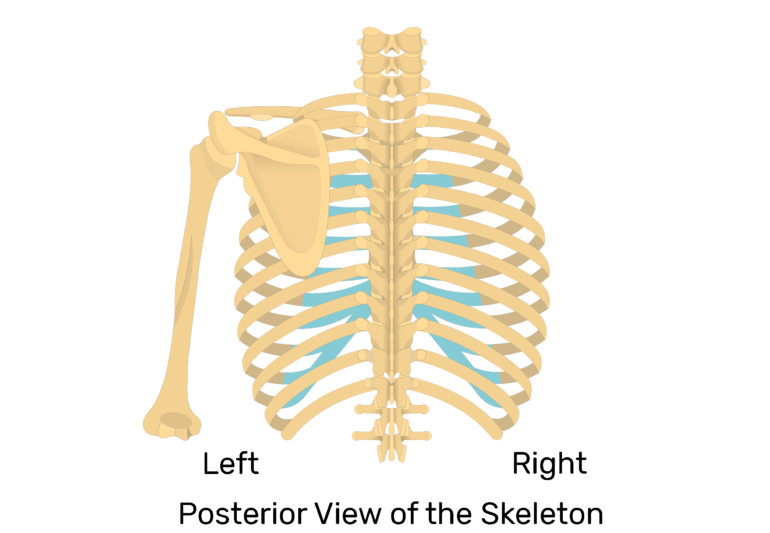
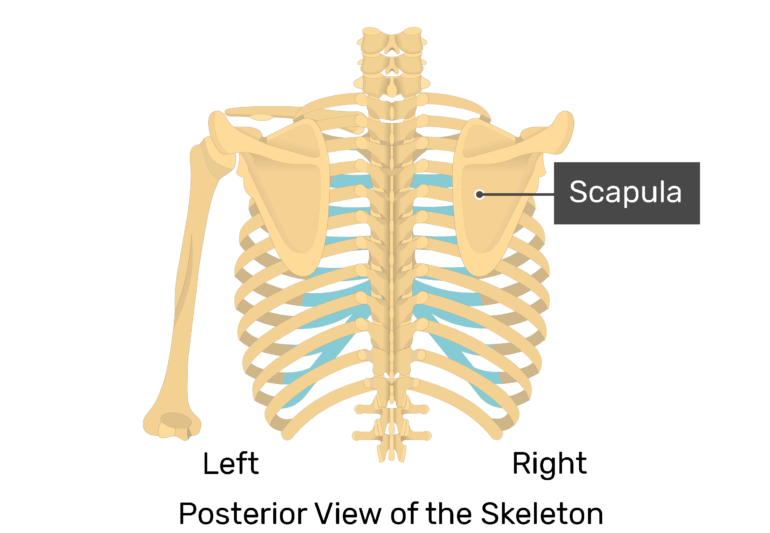
Markings of the Scapula Bone:
- It has three borders (superior, lateral, medial), three angles (superior, lateral, medial) and two surfaces (costal, dorsal). A prominent ridge or spine divides the dorsal surface into two, unequal parts called the supraspinous fossa and infraspinous fossa.
- A shallow depression at the lateral angle called the glenoid cavity accepts the head of the humerus to form the shoulder or gleno-humeral joint.
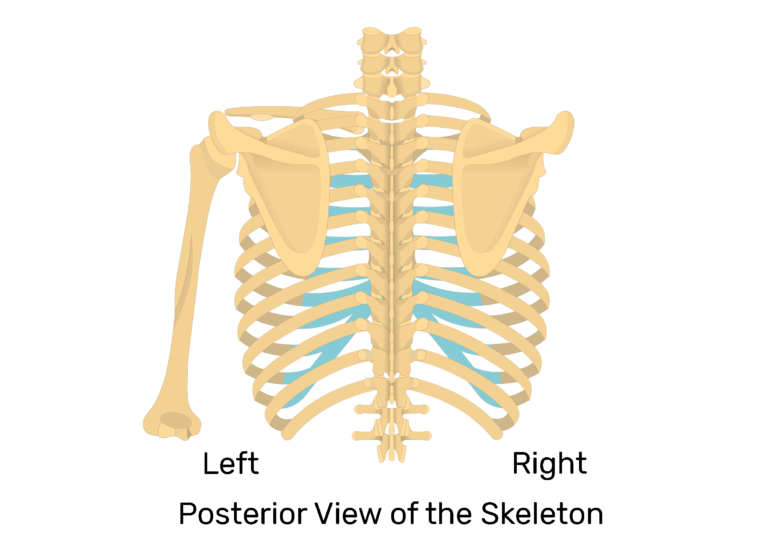
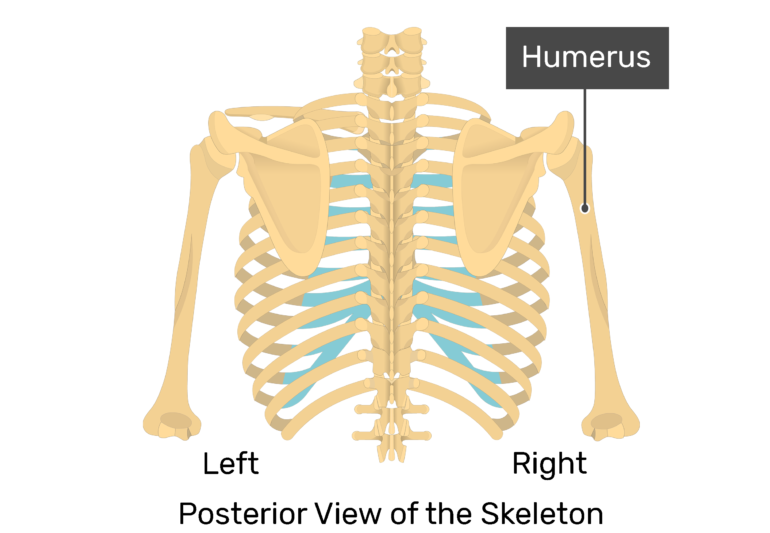
3.The scapula also articulates with the clavicle to form the shoulder girdle or pectoral girdle, which supports movements of the humerus.

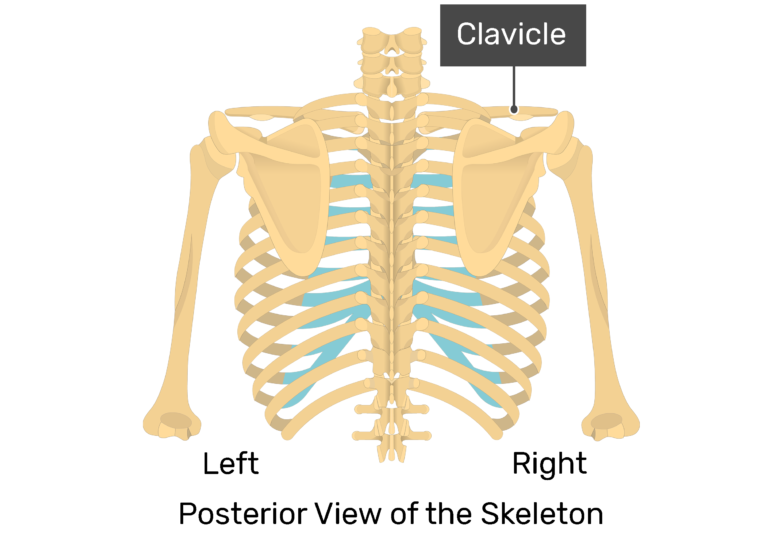
4.Seventeen muscles attach to the borders, angles, ridges, bumps, processes, and fossae found on the surface of the scapula.

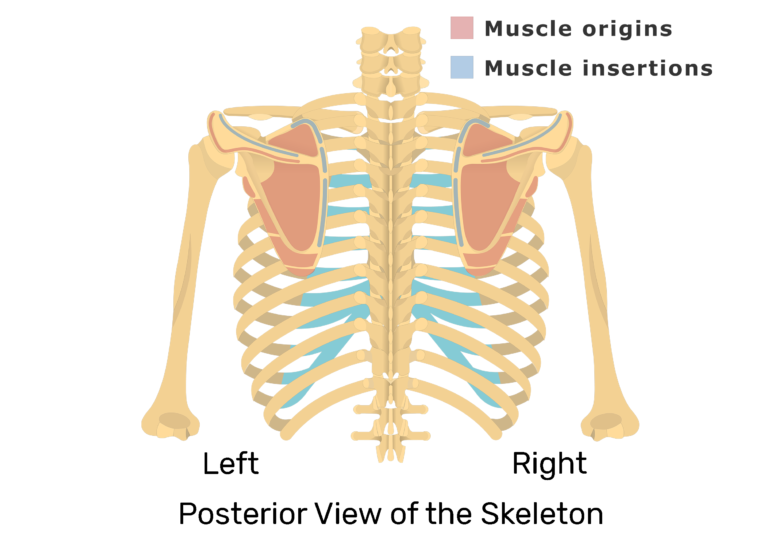
5.The muscles that insert on the scapula (intrinsic muscles) connect it to the axial skeleton. When these muscles contract, the scapula is elevated, depressed, rotated, protracted, retracted, or stabilized when the humerus is moved.
6.The muscles that originate on the scapula (extrinsic muscles) insert on the humerus, radius, and ulna. They cause the humerus to rotate, abduct, adduct, flex or extend.
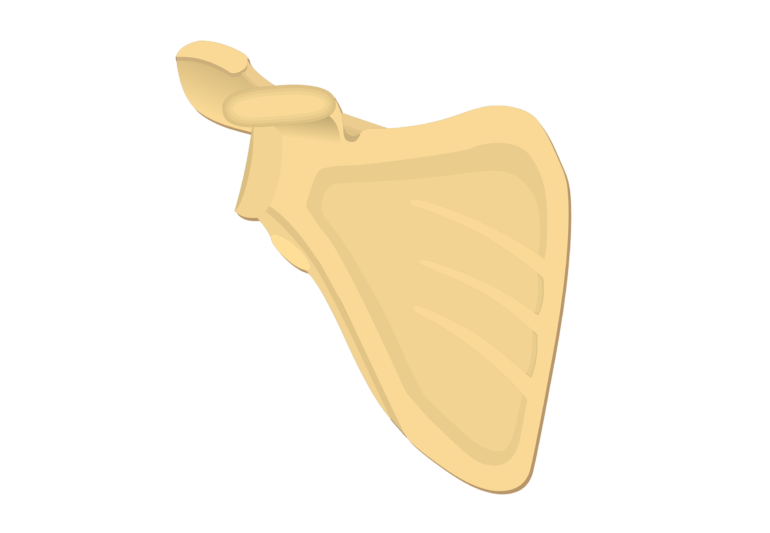
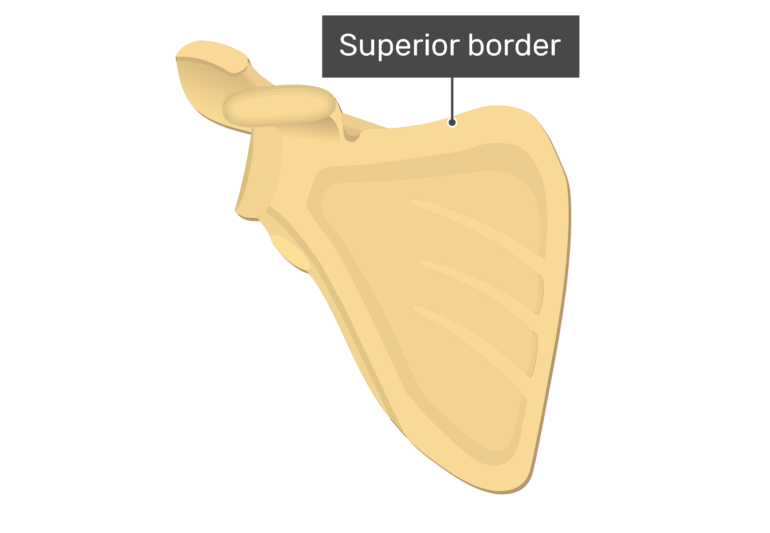
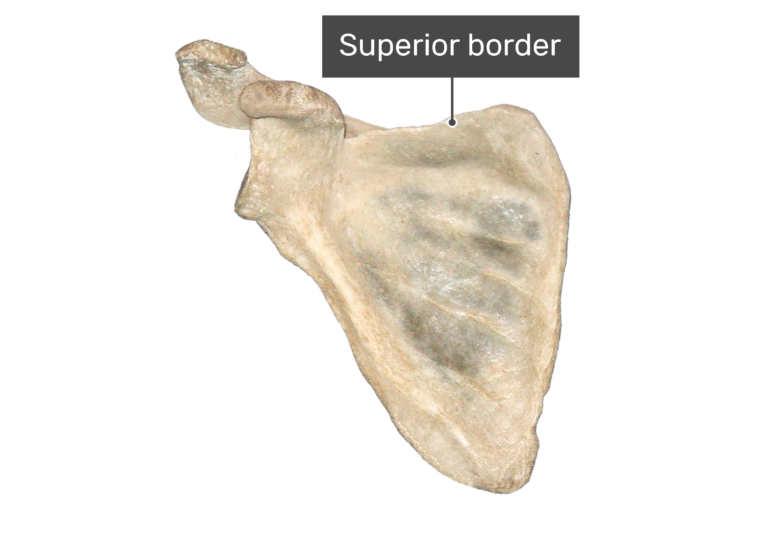

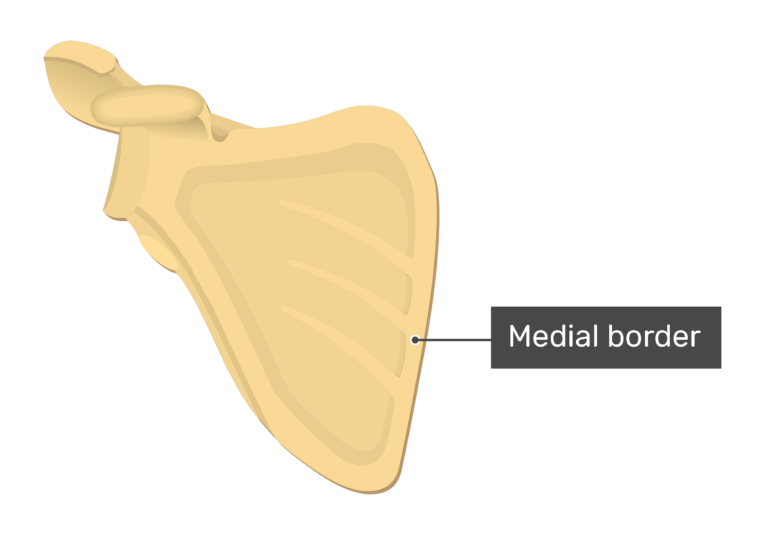
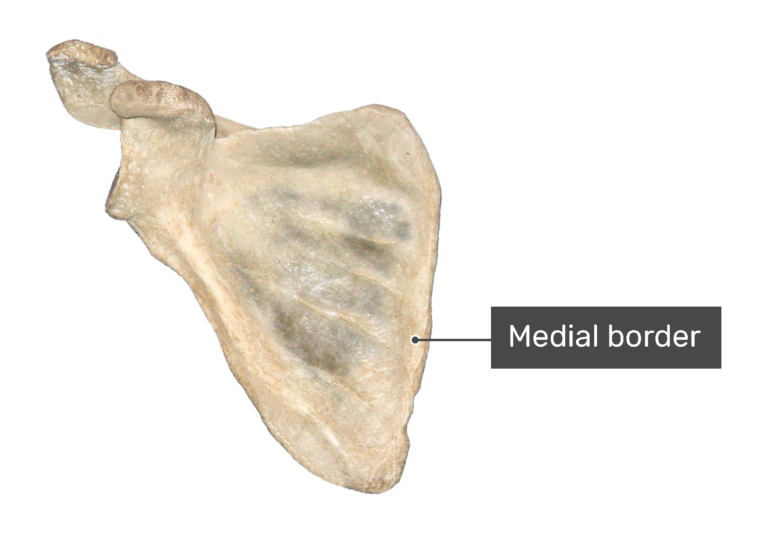


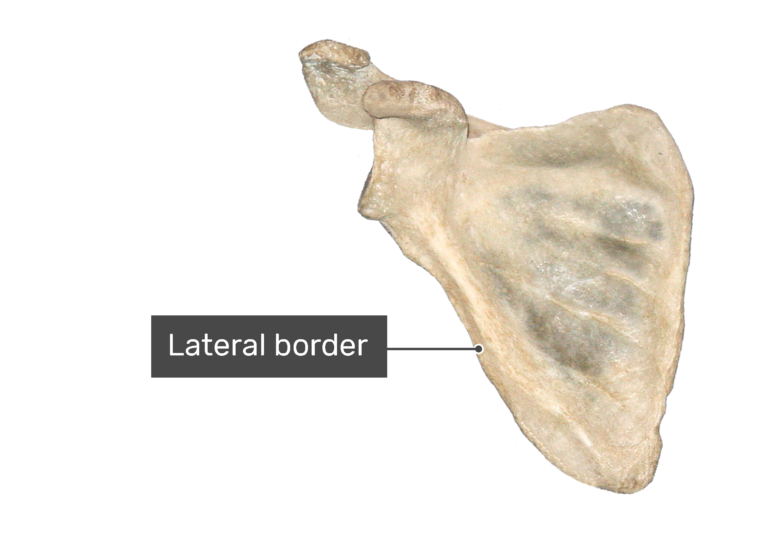

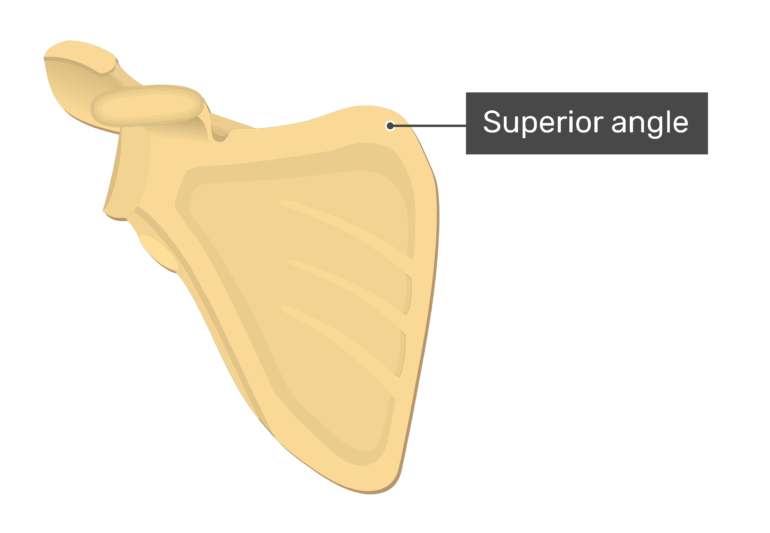

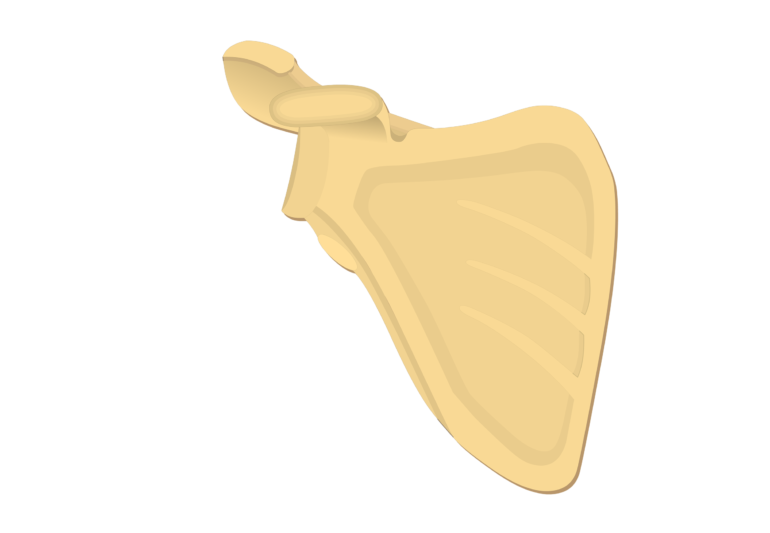



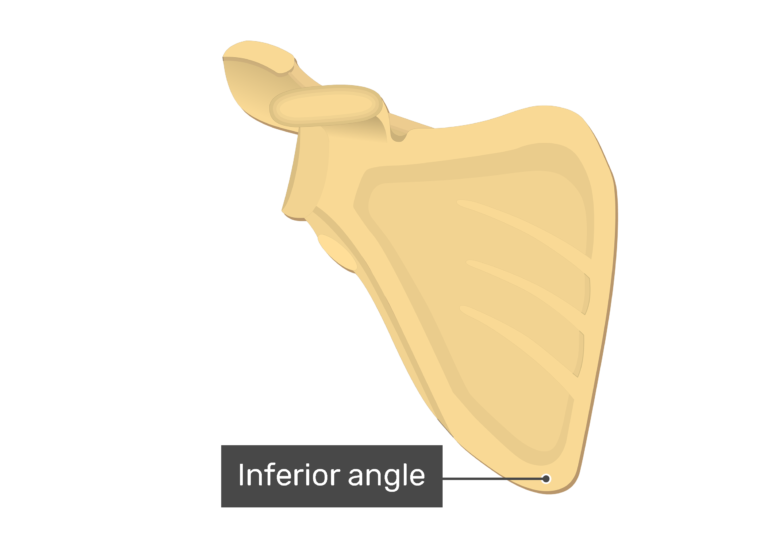
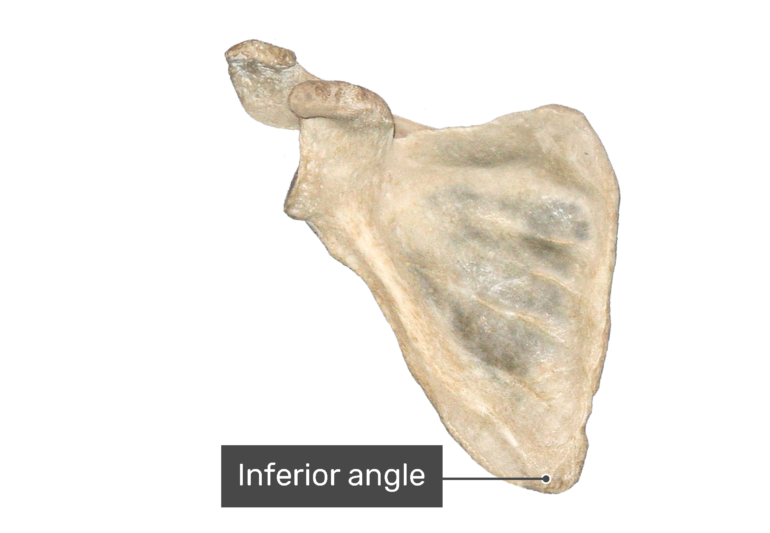




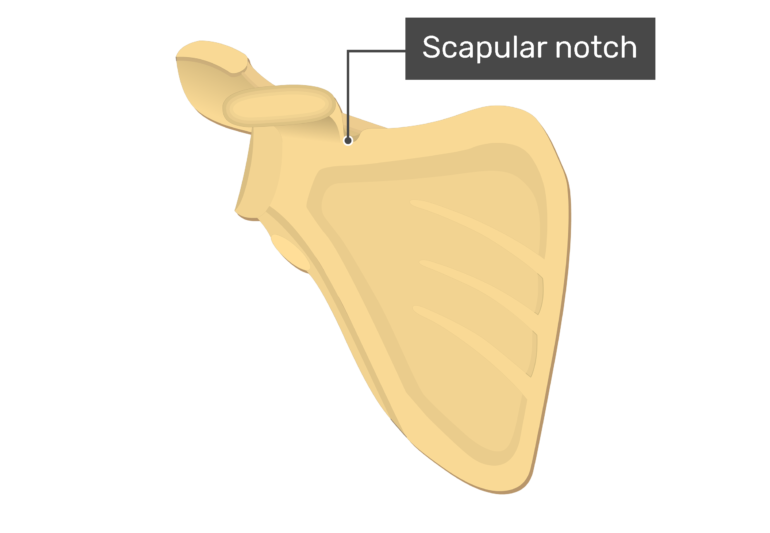
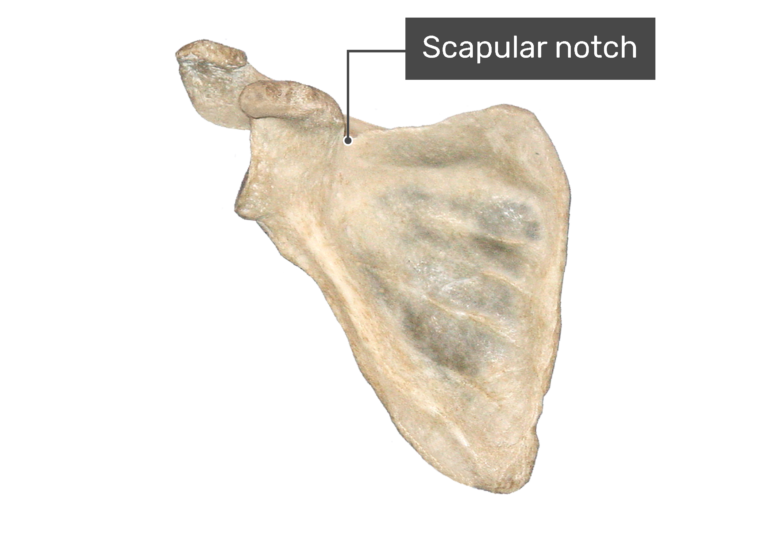





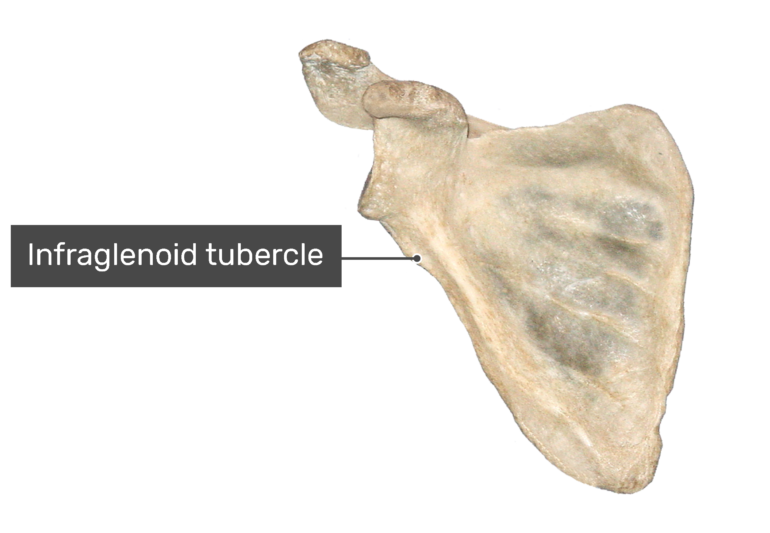

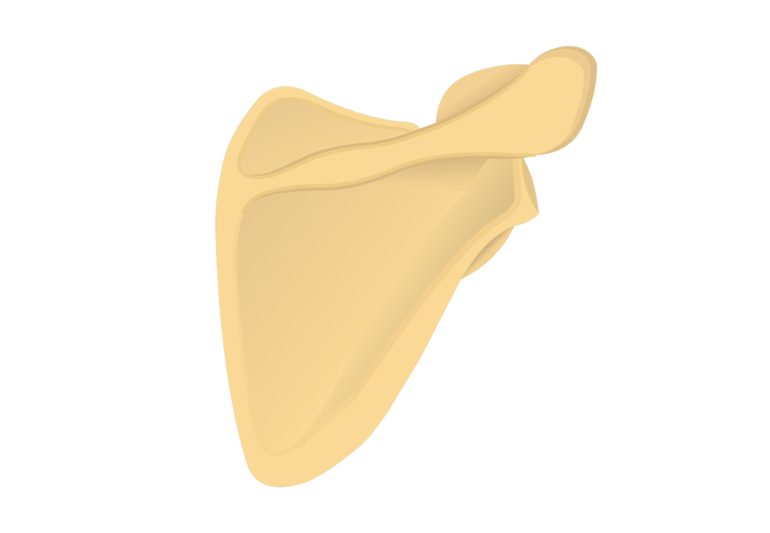

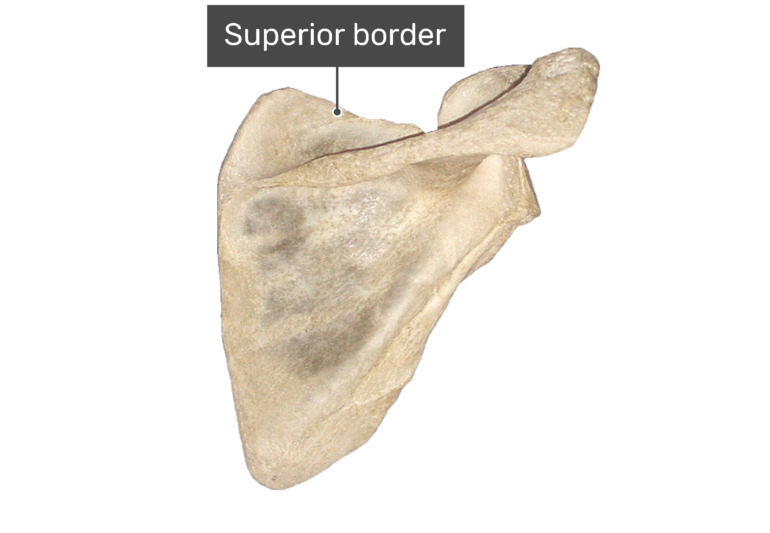
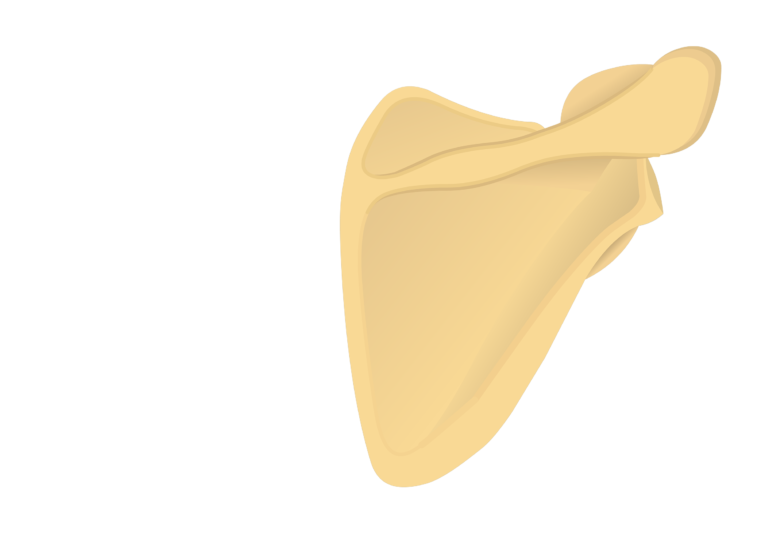
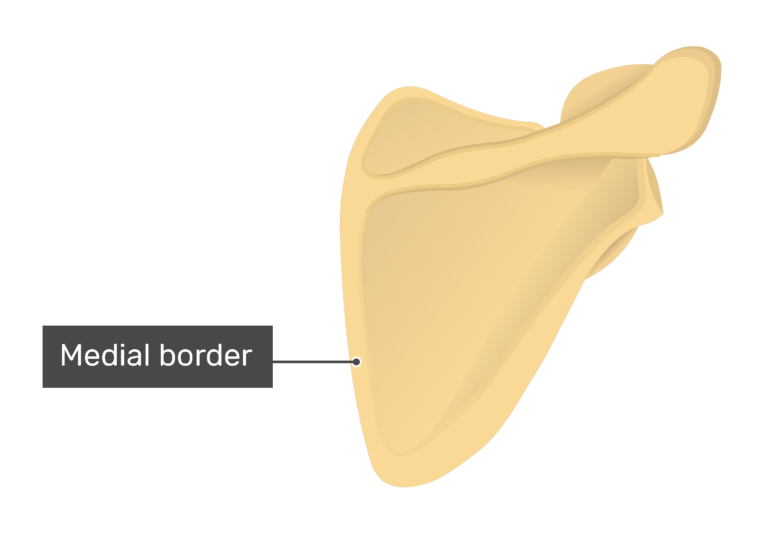

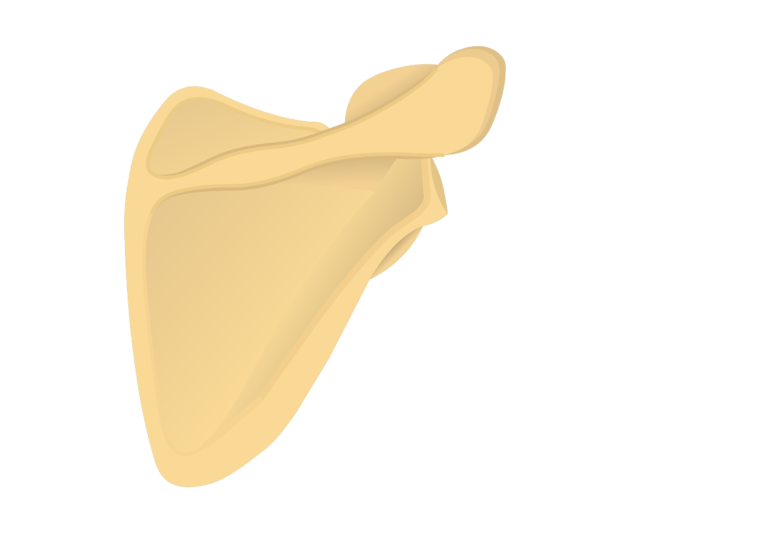

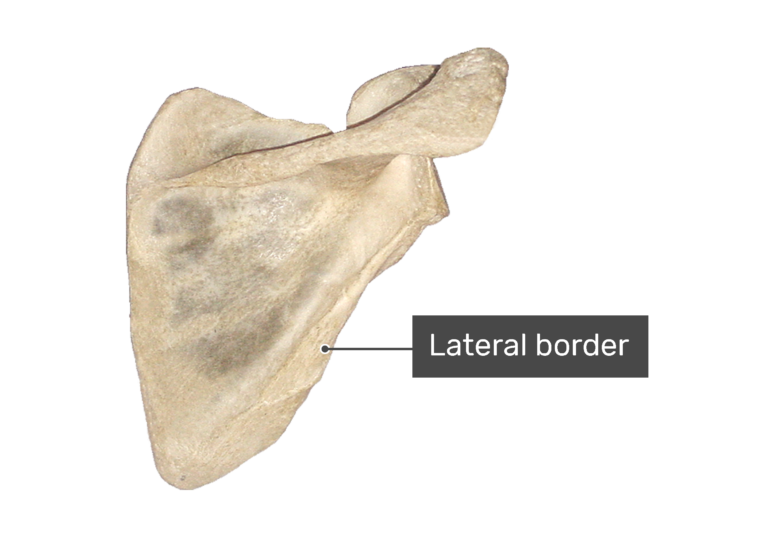


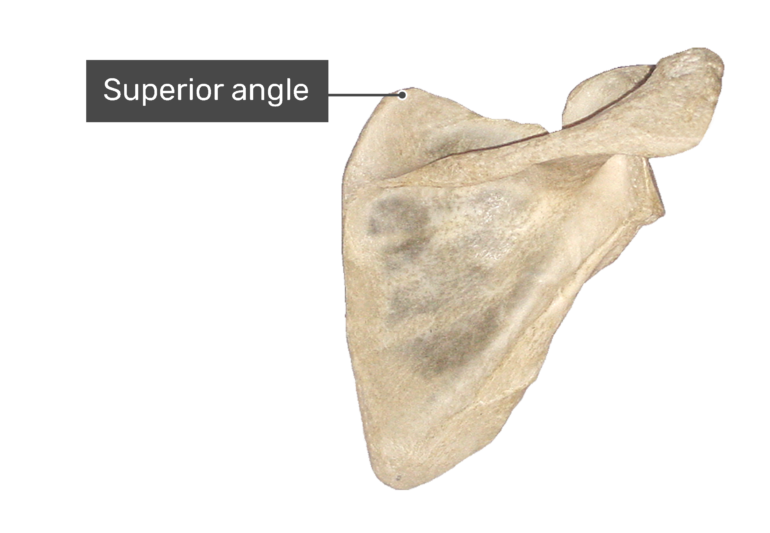




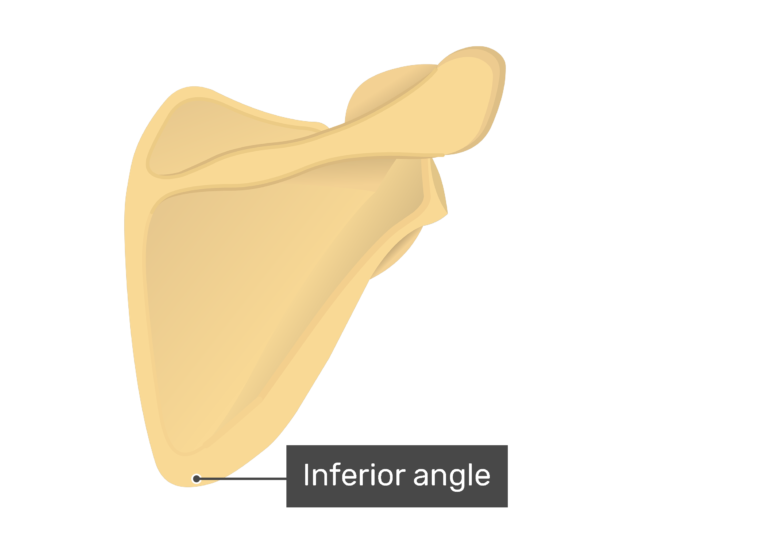
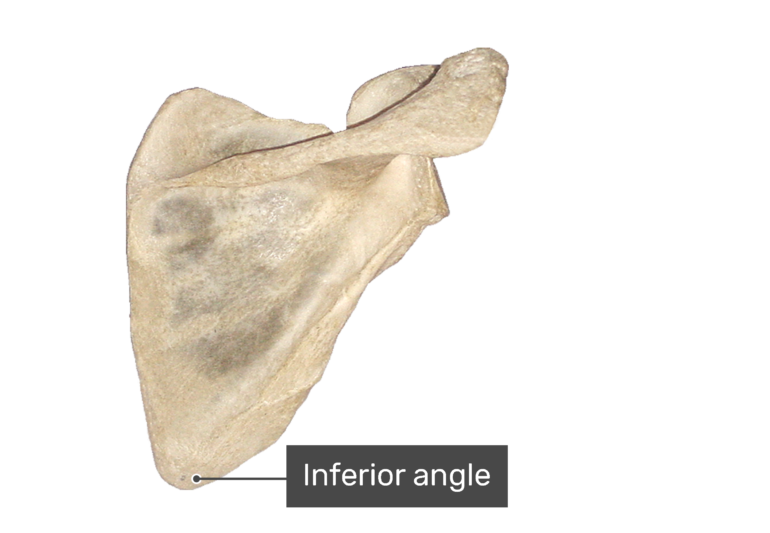


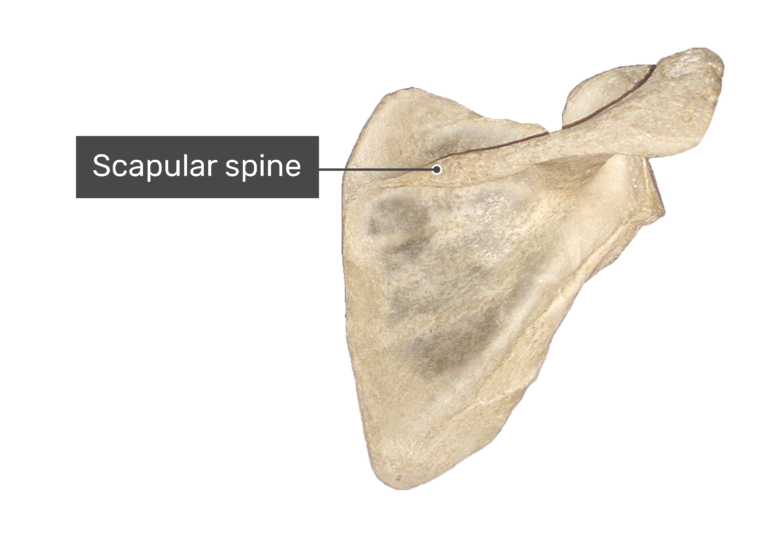







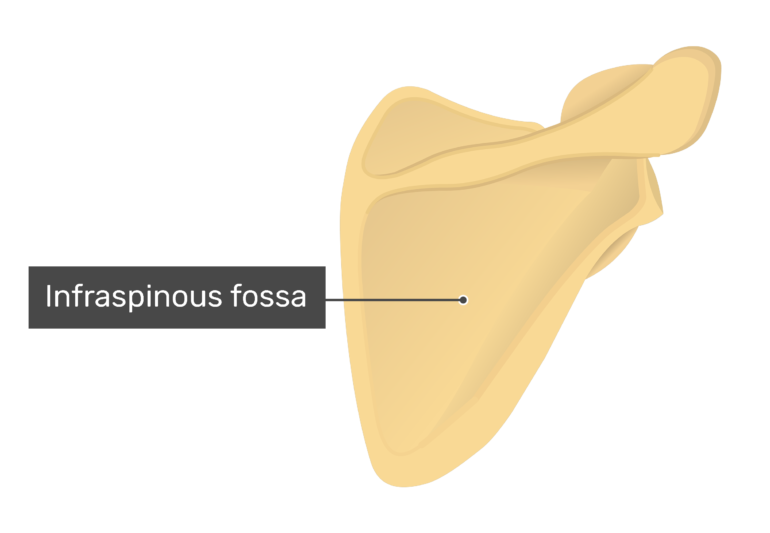


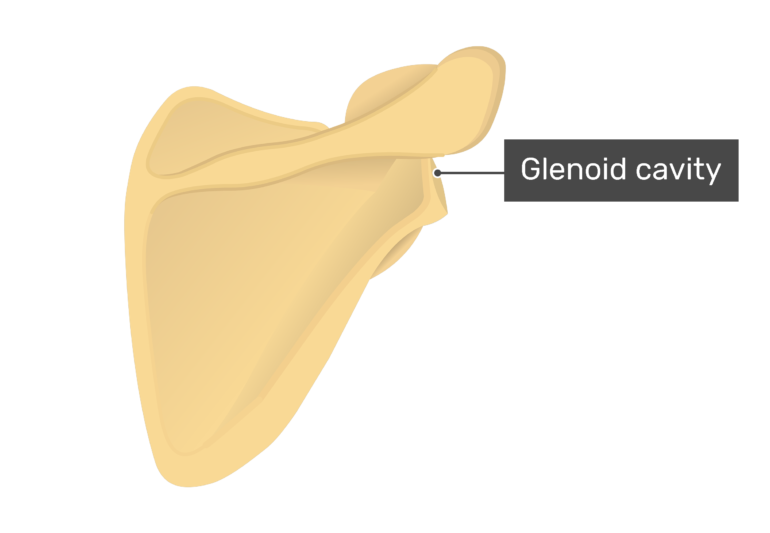
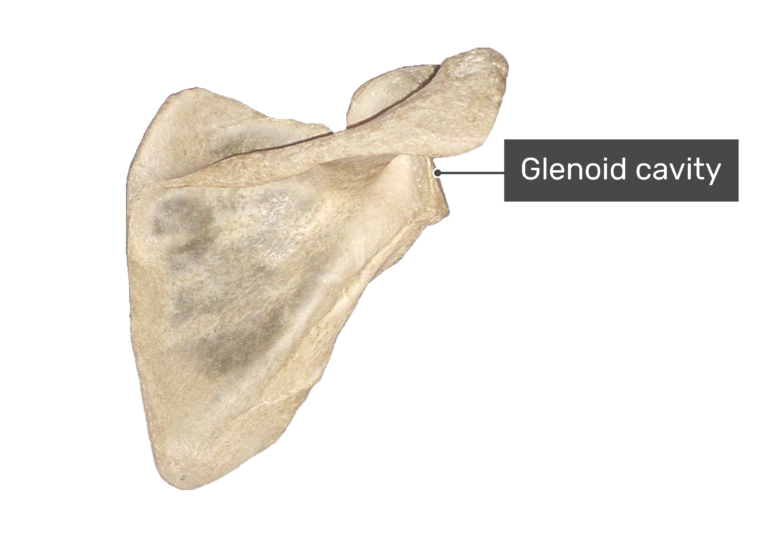




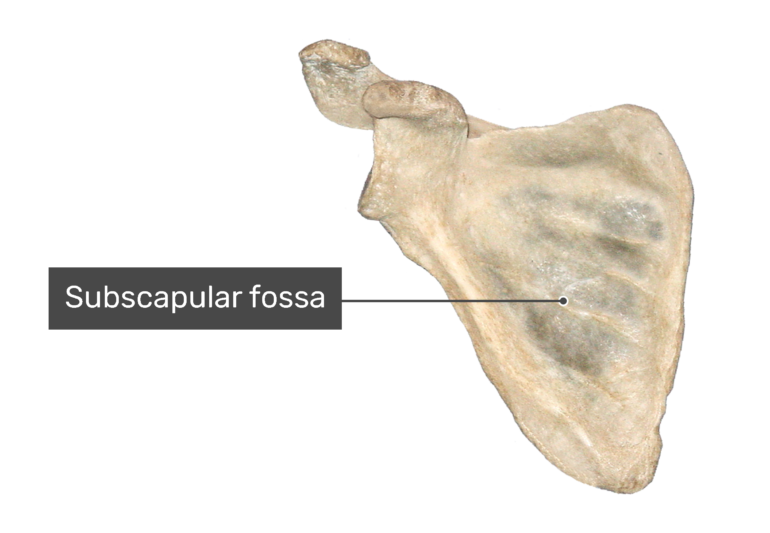




































Anterior Scapula Bone:
Bone Markings:
- Superior border or margin (Margo superior) is the upper edge of the scapula that runs next to the clavicle. The omohyoid muscle attaches along this surface.



2.Medial border or margin (Margo medialis) is the medial edge of the scapula and is also called the vetebral border. This area is an attachment point for the rhomboid major, rhomboid minor and serratus anterior muscles.



- Lateral border or margin (Margo lateralis) is the lateral edge of the scapula. The teres minor muscle attaches along this surface, which is also called the axillary border.



4.Superior angle (Angulus superior) is a sharp curvature at the junction of the superior and medial borders. This area is an attachment point for levator scapula muscle.



5.Lateral angle (Angulus lateralis) is the junction of the superior and lateral borders. Its slightly concave lateral edge articulates with the head of the humerus.



6.Inferior angle (Angulus inferior) is a sharp curvature formed at the junction of the medial and lateral margins. It is an area of attachment for the teres major muscle.



7.Coracoid process (Processus coracoi-deus) is a curved, hook-like anterolateral projection located above the lateral angle.
- The term coracoid refers to the marking’s resemblance to a crow’s beak (Gr., korax, crow’s). The biceps brachii, coracobrachialis, and pectoralis minor muscles attach along the surface of this process.



8.Suprascapular (scapular) notch (Incisura scapulae) is a small groove located medial to the coracoid process. It forms a passageway for the suprascapular nerve.



9.Glenoid cavity or fossa (Cavitas glen-oidalis) is a slight concavity at the lateral angle. It forms a shallow socket for the articulation of the head of the humerus.



10.Infraglenoid tubercle (Tuberculum infra-glenoidale) is a small prominence on the inferior margin of the glenoid fossa. It serves as an attachment point for the long head of the triceps brachii muscle.



11.Subscapular fossa (Fossa subscapularis) is a large, slightly depressed region in the middle of scapula’s anterior surface. The subscapularis muscle attaches to this region of the bone.

Posterior Scapula Bone Anatomy
Bone Markings:
- Superior border or margin (Margo superior) is the upper edge of the scapula that runs next to the clavicle. The omohyoid muscle attaches along this surface.



2.Medial border or margin (Margo medialis) is the medial edge of the scapula and is also called the vetebral border. This area is an attachment point for the rhomboid major, rhomboid minor and serratus anterior muscles.



3.Lateral border or margin (Margo lateralis) is the lateral edge of the scapula. The teres minor muscle attaches along this surface, which is also called the axillary border.



4.Superior angle (Angulus superior) is a sharp curvature at the junction of the superior and medial borders. This area is an attachment point for levator scapula muscle.



5.Lateral angle (Angulus lateralis) is the junction of the superior and lateral borders. Its slightly concave lateral edge articulates with the head of the humerus.



6.Inferior angle (Angulus inferior) is a sharp curvature formed at the junction of the medial and lateral margins. It is an area of attachment for the teres major muscle.



7.Scapular spine (Spina scapulae) is a long ridge that runs diagonally across the upper posterior surface of the bone. The trapezius and posterior deltoid muscles attach to the surface of this prominent elevation.



8.Acromion (Acromion scapulae) is a lat-eral, fan-like extension of the spine. It also is an attachment point for the trapezius and posterior deltoid muscles.



9.Supraspinous fossa (Fossa supraspinata) is a slightly depressed area located superior to the spine. The supraspinatus muscle attaches to this region of the scapula.



10.Infraspinous fossa (Fossa infrspinata) is a large, slightly depressed area located inferior to the spine. It serves as an attachment point for the infraspinatus muscle



11.Glenoid cavity or fossa (Cavitas glenoidalis) is a slight concavity at the lateral angle. It forms a shallow socket for the articulation of the head of the humerus.



12.Infraglenoid tubercle (Fossa subscapularis) (Tuberculum infra-glenoidale) is a small prominence on the inferior margin of the glenoid fossa. The long head of the triceps brachii muscle attaches to this knob-like ridge.



Slide for labels


Posterior Scapula Bone Anatomy
Bone Markings:
 Superior border or margin (Margo superior) is the upper edge of the scapula that runs next to the clavicle. The omohyoid muscle attaches along this surface.
Superior border or margin (Margo superior) is the upper edge of the scapula that runs next to the clavicle. The omohyoid muscle attaches along this surface.  Illustration /
Illustration /  Real Bone
Real Bone



Slide for labels
1
2
3
 Medial border or margin (Margo medialis) is the medial edge of the scapula and is also called the vetebral border. This area is an attachment point for the rhomboid major, rhomboid minor and serratus anterior muscles.
Medial border or margin (Margo medialis) is the medial edge of the scapula and is also called the vetebral border. This area is an attachment point for the rhomboid major, rhomboid minor and serratus anterior muscles.  Illustration /
Illustration /  Real Bone
Real Bone



Slide for labels
1
2
3
 Lateral border or margin (Margo lateralis) is the lateral edge of the scapula. The teres minor muscle attaches along this surface, which is also called the axillary border.
Lateral border or margin (Margo lateralis) is the lateral edge of the scapula. The teres minor muscle attaches along this surface, which is also called the axillary border.  Illustration /
Illustration /  Real Bone
Real Bone



Slide for labels
1
2
3
 Superior angle (Angulus superior) is a sharp curvature at the junction of the superior and medial borders. This area is an attachment point for levator scapula muscle.
Superior angle (Angulus superior) is a sharp curvature at the junction of the superior and medial borders. This area is an attachment point for levator scapula muscle.  Illustration /
Illustration /  Real Bone
Real Bone



Slide for labels
1
2
3
 Lateral angle (Angulus lateralis) is the junction of the superior and lateral borders. Its slightly concave lateral edge articulates with the head of the humerus.
Lateral angle (Angulus lateralis) is the junction of the superior and lateral borders. Its slightly concave lateral edge articulates with the head of the humerus.  Illustration /
Illustration /  Real Bone
Real Bone



Slide for labels
1
2
3
 Inferior angle (Angulus inferior) is a sharp curvature formed at the junction of the medial and lateral margins. It is an area of attachment for the teres major muscle.
Inferior angle (Angulus inferior) is a sharp curvature formed at the junction of the medial and lateral margins. It is an area of attachment for the teres major muscle.  Illustration /
Illustration /  Real Bone
Real Bone



Slide for labels
1
2
3
 Scapular spine (Spina scapulae) is a long ridge that runs diagonally across the upper posterior surface of the bone. The trapezius and posterior deltoid muscles attach to the surface of this prominent elevation..
Scapular spine (Spina scapulae) is a long ridge that runs diagonally across the upper posterior surface of the bone. The trapezius and posterior deltoid muscles attach to the surface of this prominent elevation..  Illustration /
Illustration /  Real Bone
Real Bone



Slide for labels
1
2
3
 Acromion (Acromion scapulae) is a lat-eral, fan-like extension of the spine. It also is an attachment point for the trapezius and posterior deltoid muscles.
Acromion (Acromion scapulae) is a lat-eral, fan-like extension of the spine. It also is an attachment point for the trapezius and posterior deltoid muscles.  Illustration /
Illustration /  Real Bone
Real Bone



Slide for labels
1
2
3
 Supraspinous fossa (Fossa supraspinata) is a slightly depressed area located superior to the spine. The supraspinatus muscle attaches to this region of the scapula.
Supraspinous fossa (Fossa supraspinata) is a slightly depressed area located superior to the spine. The supraspinatus muscle attaches to this region of the scapula.  Illustration /
Illustration /  Real Bone
Real Bone



Slide for labels
1
2
3
 Infraspinous fossa (Fossa infrspinata) is a large, slightly depressed area located inferior to the spine. It serves as an attachment point for the infraspinatus muscle.
Infraspinous fossa (Fossa infrspinata) is a large, slightly depressed area located inferior to the spine. It serves as an attachment point for the infraspinatus muscle.  Illustration /
Illustration /  Real Bone
Real Bone



Slide for labels
1
2
3
 Glenoid cavity or fossa (Cavitas glenoidalis) is a slight concavity at the lateral angle. It forms a shallow socket for the articulation of the head of the humerus.
Glenoid cavity or fossa (Cavitas glenoidalis) is a slight concavity at the lateral angle. It forms a shallow socket for the articulation of the head of the humerus.  Illustration /
Illustration /  Real Bone
Real Bone



Slide for labels
1
2
3
 Infraglenoid tubercle (Fossa subscapularis) (Tuberculum infra-glenoidale) is a small prominence on the inferior margin of the glenoid fossa. The long head of the triceps brachii muscle attaches to this knob-like ridge.
Infraglenoid tubercle (Fossa subscapularis) (Tuberculum infra-glenoidale) is a small prominence on the inferior margin of the glenoid fossa. The long head of the triceps brachii muscle attaches to this knob-like ridge.  Illustration /
Illustration /  Real Bone
Real Bone



Slide for labels
- Get link
- X
- Other Apps


Comments
Post a Comment